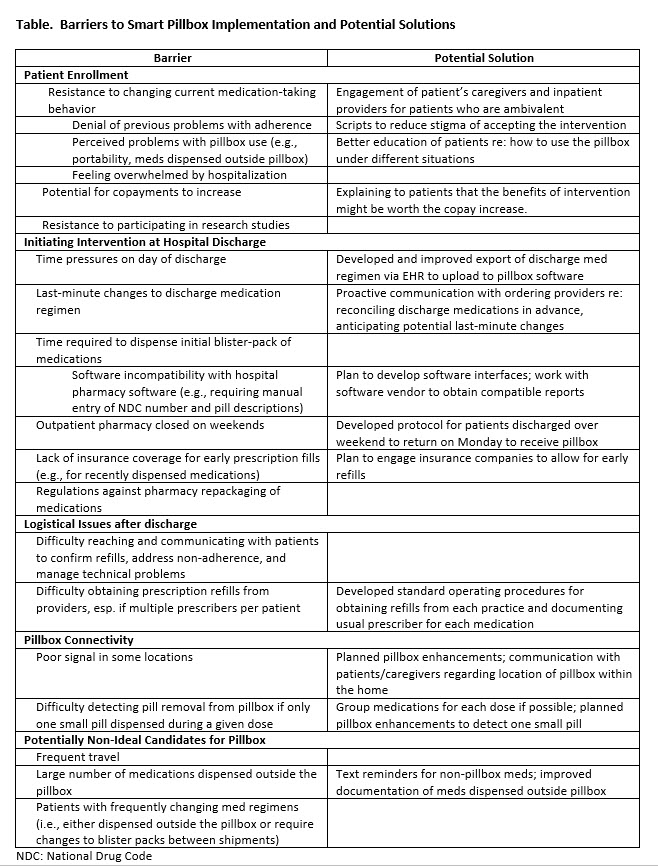Background: Adverse drug events are common during transitions of care and often due to patient misunderstanding of the medication regimen or non-adherence. Challenges exist that may influence the ability of new interventions to address this issue. As part of the Smart Pillbox study, a randomized controlled trial of an electronic pillbox, we explored barriers and facilitators to successful implementation of this intervention.
Purpose: The goal of the Smart Pillbox study is to reduce medication discrepancies and improve medication adherence after discharge from a large teaching hospital. Eligible patients are those admitted to a medicine service with a plan to be discharged home on 5 or more chronic medications. To identify barriers and facilitators to implementation of the intervention, we reviewed patient exit questionnaires, technical issue logs, and team meeting minutes.
Description: The intervention consists of an electronic pillbox with pre-filled weekly blister pack medication trays given to patients prior to discharge. Refills are mailed to patients’ homes. When it is time for patients to take their medications, the pillbox chimes and the appropriate medication well lights up. The pillbox can alert patients or caregivers by phone, email, or text, and it generates adherence reports accessible by providers. Less than 80% adherence for 3 days in a row triggers outreach from a pharmacist.
Barriers to implementation have included challenges to patient enrollment in the study, logistical issues with coordinating the intervention at the time of hospital discharge, logistical issues after discharge, and some problems with pillbox connectivity (Table). In addition, some patients may not be ideal candidates for this intervention, e.g., patients with frequently changing medication regimens. Several solutions to facilitate implementation and/or address many of these challenges have been implemented or are planned (Table). Despite these challenges, many patients with the pillbox are pleased with the service and have said that it works well for them.
Conclusions: A smart pillbox has potential to decrease medication discrepancies and improve adherence after hospital discharge. However, many patients may not be interested in adopting this electronic intervention, even if good candidates, while others may truly not be ideal candidates due to their lifestyle or the nature of their regimen. Barriers to implementation may be overcome by taking advantage of lessons learned from our experience or solved by making the intervention part of usual care. Despite the challenges, the potential benefits of intervening during this high-risk period warrant further efforts to modify and refine discharge workflow so that patients can take advantage of this intervention.

